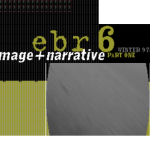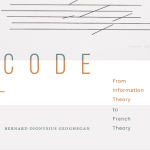electropoetics
Affect Aesthetic and Politics of the Book
A Review of Bookishness, by Jessica Pressman.
Episode 10: Immersive Storytelling in Augmented Reality and Virtual Reality with Caitlin Fisher
In this episode of "Off Center," Scott Rettberg, Director of the Center for Digital Narrative at the University of Bergen, interviews Caitlin Fisher, a pioneer of immersive AR and VR and Director of the Immersive Storytelling Lab at York University.
Episode 9: Hypertext as Technology and Literature with Robert Arellano
Hypertext pioneer Robert Arellano discusses the genre with Scott Rettberg, Director of the Center for Digital Narrative (CDN).
Episode 6: Gendered AI and Editorial Labour in Digital Culture with Lai-Tze Fan
Scott Rettberg, director of the Center for Digital Narrative (CDN) is joined by Lai-Tze Fan to discuss gendered AI assistants and the invisible labor involved in editorial work.
Episode 5: AI, Computational Creativity, and Media Production with Drew Keller
Drew Keller, Microsoft employee and graduate of the Digital Culture program at the University of Bergen joins Scott Rettberg to talk about the potential role of AI in our media production. From the Jacquard loom to the PowerPoint designer, human creativity has always been intertwined with technology, but is the rapid increase in AI a revolution in the way we produce media, or just another tool?
Memorial for Marjorie C. Luesebrink
EBR would like to express thanks to Dene Grigar and Deena Larsen at Washington State University Vancouver, for organizing and hosting a memoriam for Marjorie C. Luesebrink and for letting us share the memoriam in our journal.
ebr historical intertext
Returning to past formats in the electronic book review such as 'designwriting from the mid-1990s,' ebr co-editor Lai-Tze Fan alerts readers to a feature that is as much a part of our journal's publication, and positioning, as the essays themselves. As annotations in the margins of print texts allow readers to reference earlier texts, a more interactive, intertextual and perhaps more accessible conversation is made available within and among digital texts.
Review of Bernard Dionysius Geoghegan’s Code: From Information Theory to French Theory (Duke UP 2022)
Is it possible to discover digital prophecies in thinkers like Lacan, Barthes, Derrida, Foucault, Deleuze, and Baudrillard? Heckman has a go at it in this close reading of Dionysius Geoghegan's Code: From Information Theory to French Theory.
Episode 4: Meme Culture, Social Media, and the January 6th Insurrection with Ashleigh Steele
Scott Rettberg, director of the Center for Digital Narrative is joined by journalist and Digital Culture graduate Ashleigh Steele to talk about memes, post-truth and the way narrativity shapes our understanding of ourselves and our world. We are increasingly affected by algorithms, AI and conspiracy theories, but what kind of effect does this have on our discourse, and how do we fight back?
In Memoriam, George Landow
The editors at ebr asked Bobby Arellano to draft a reflection on the passing of George Landow. Working with Landow in the early years of the Victorian Web, Arellano transferred most of the documents from the Intermedia system into Storyspace and relinked them. We present Arellano's reflection, in memoriam, along with an official obit provided by Ruth Landow (George's friend of 78 years and his wife of 57 years).









